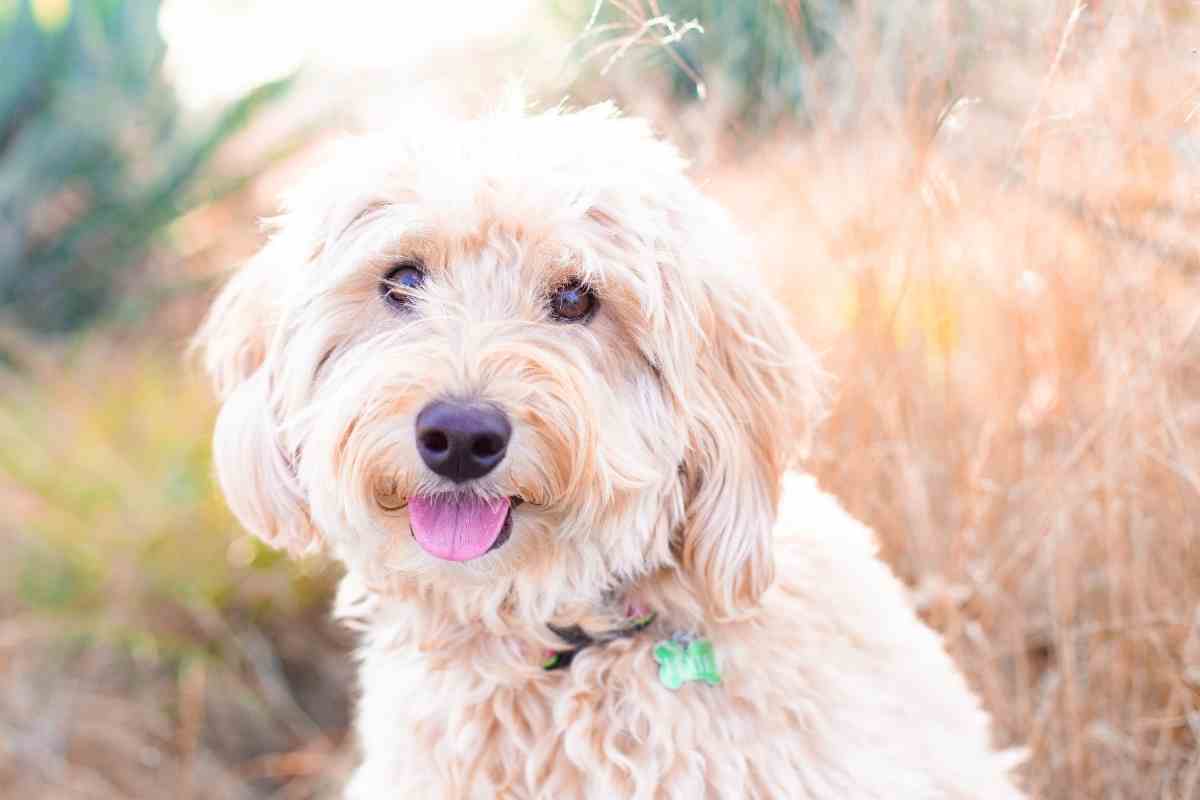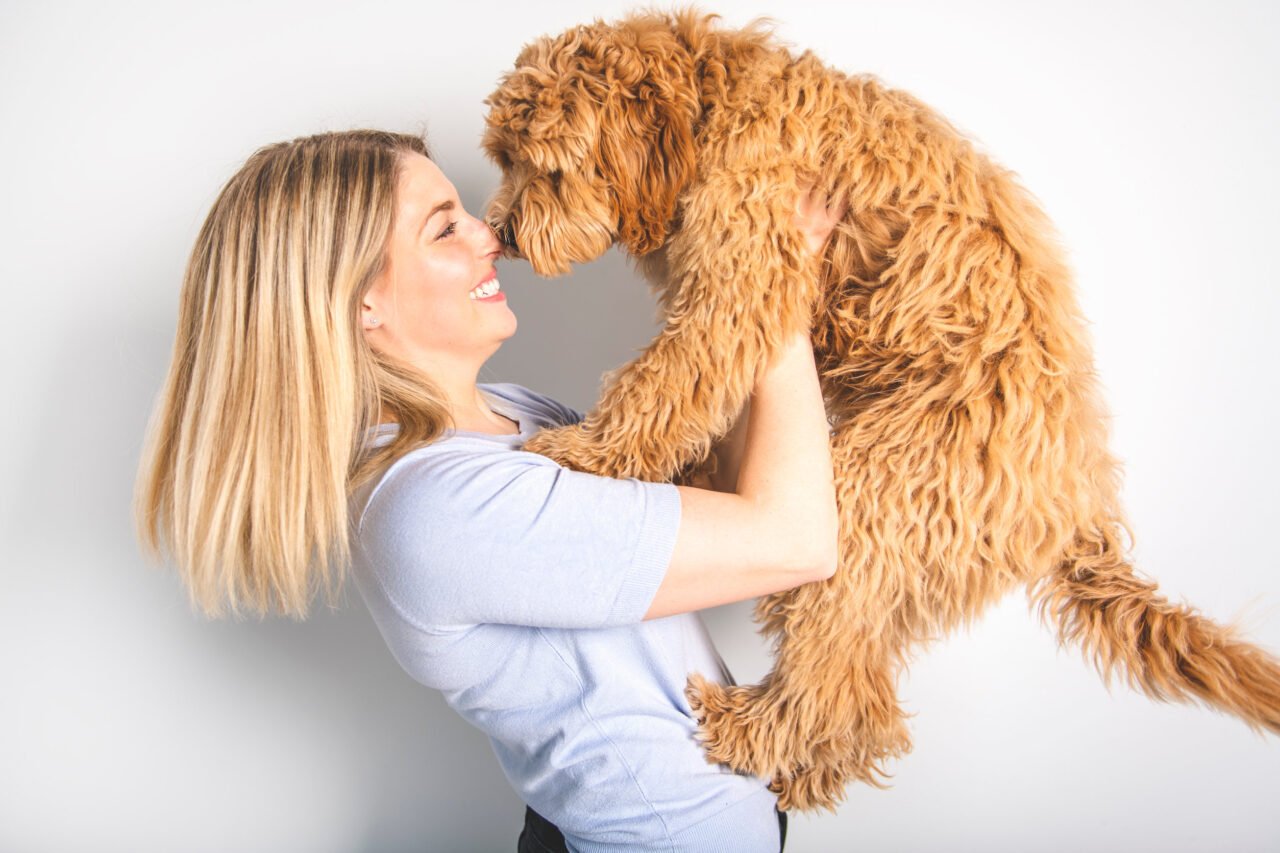Will an Apricot Goldendoodle Fade?
There are many different shades of Goldendoodle fur colors that you will be able to choose from, and they’re all hypoallergenic and have that great Goldendoodle temperament. Some of these designer dogs are going to be a darker color of brown or black, some will be silver and kind of grey, and others will be an apricot color.
No matter what color you have for the Goldendoodle, you want to keep the beautiful coat and make sure that it is going to stick around. But will apricot Goldendoodles start to fade over time?
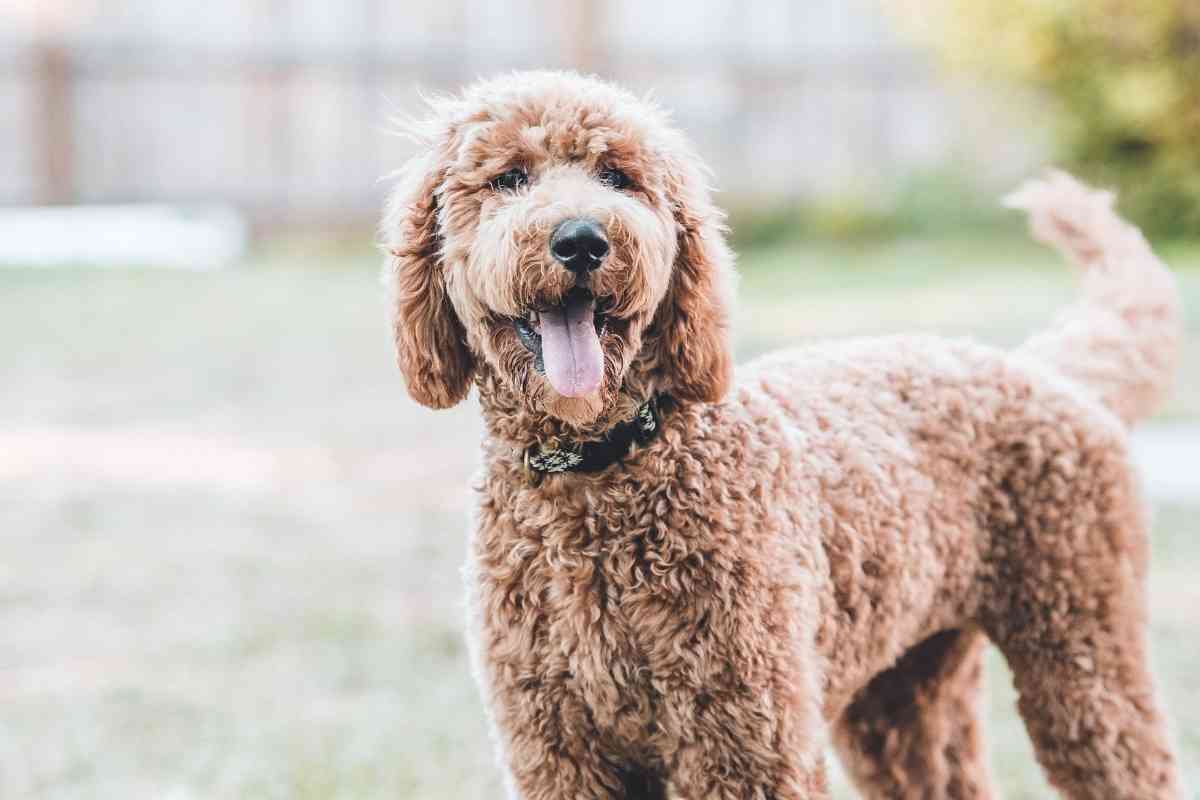
Do Apricot Goldendoodles Fade?
Apricot Goldendoodles’ color, as well as all other colors of Goldendoodles, will fade as they get older. Their coats will generally lighten in color when they lose their puppy coat and develop their adult coat and once again as they become senior dogs.
Let’s take a closer look at some of the different colors that your Goldendoodle is going to have and why these colors are going to fade over time.
When you bring the Goldendoodle home, you will likely notice that they come home with a bright coat color. This may be part of the reason that you chose that one to come home with you; you enjoyed the pretty color in their fur.
When you get them home, you may wonder whether the Goldendoodle’s coat is going to stay that color or if you should be prepared for the coat color to fade.
This is a normal process for the Goldendoodle and for many other dogs. As they get older and pass into maturity, it is not uncommon for the fur color, even the apricot color, to start fading in the Goldendoodle.
This can still give you a pretty color on the dog, though it may not be quite as vibrant as you were used to when the dog was younger.
It can be challenging to predict color because recessive genes can come into play, affecting the degree to which the red color is expressed and fades over time. If you have a parti poodle, you may find that the red parts fade while other parts don’t. It can get confusing, but this article can help you predict your dog’s pigmentation.
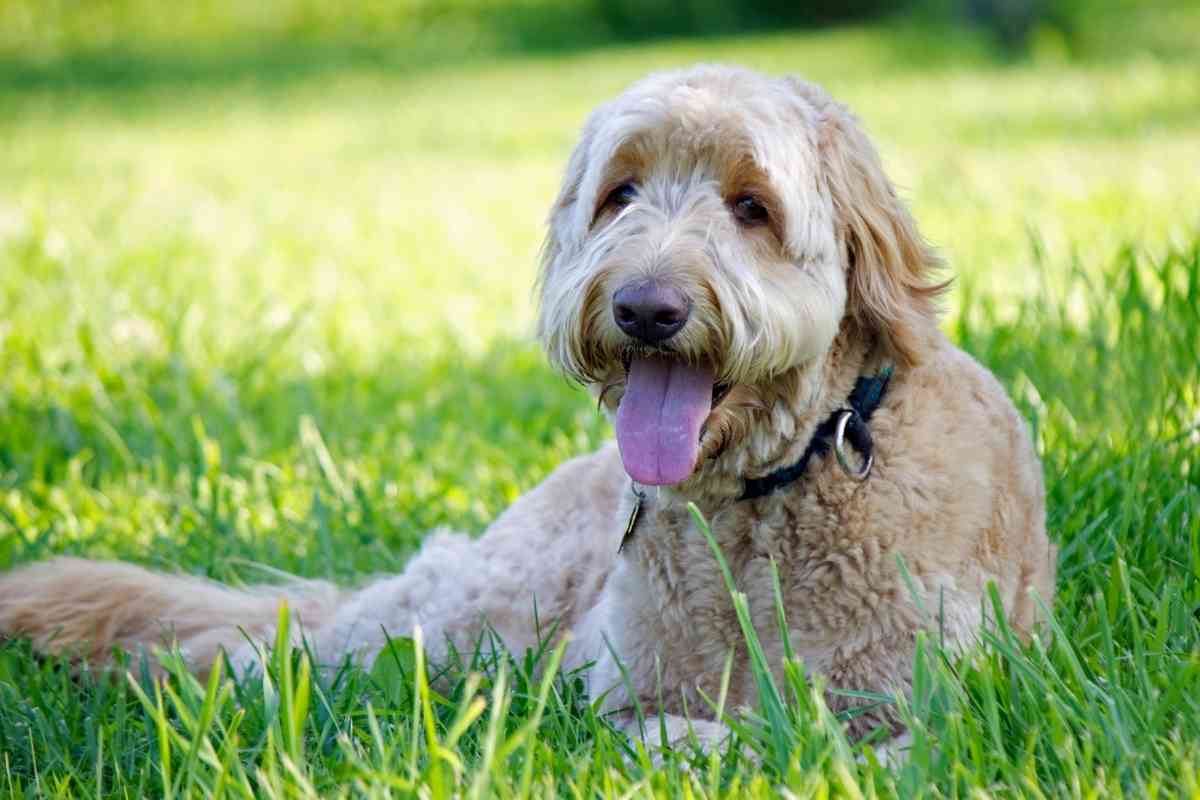
What are the Common Colors for the Goldendoodle?
There are a lot of different colors that the Goldendoodle is going to come in. When deciding on an apricot vs red Goldendoodle or deciding of a white Goldendoodle or cream Goldendoodle is right for you, you need to think about fading.
Typically, fading comes from the poodle parent, just as the wavy coat does. Poodles come in all kinds of colors, from a lighter shade or white to black. Golden retrievers can be a deep mahogany color or almost white.
White hairs in a red coat indicate a fading gene from poodle parents. Lightly golden puppy fur can become white coats, or an apricot Goldendoodle can turn to white in the same coat.
The poodle side can be unpredictable, and color combinations between breeds makes it even harder for dog owners to guess what color their dog will be. The good news is that it’s almost always an attractive color, whether you end up with a phantom Goldendoodle or the brightest color of red.
Most of the time, the Goldendoodle is going to come in a variety of colors based on the colors of the parents. Most Golden Retrievers are going to come in a wide range of golden and cream hues. You’ll see cream Goldendoodles, but that generally requires a light-colored Poodle parent, too.
The Poodle is going to have many more options in coloring available, and this is where a lot of the variety for the Goldendoodle will come in. There are tons of Poodle colors available, which is where there are so many Goldendoodle colors, too. You can find a Goldendooodle that comes in blue, grey, brown, silver, apricot, white, black, and, of course, red Goldendoodles..
The coloring is most likely going to come from the Poodle parent. This is due to the fact that the Poodle parent is going to have more color variations in their Poodle genes compared to the Golden Retriever.
If you want to get a certain color that comes with your Goldendoodle puppy, you will need to take a look at what color the Poodle is. However, the Golden Retriever is important here as well.
This parent is going to help determine how light or dark the Goldendoodle puppy will be. Some of the most common Goldendoodle colors are:
Common Goldendoodle Colors
- Black Goldendoodles
- White Goldendoodles
- Chocolate Goldendoodles
- Apricot Goldendoodles
- Red Goldendoodles
- Cream Goldendoodles
- Tan Goldendoodles
- Grey Goldendoodles
- Blue Goldendoodles
- Silver Goldendoodles
- Sable Goldendoodles
- Parti Goldendoodles
- Red Goldendoodles
- Tri Color Goldendoodles
- Phantom Goldendoodles
- Tuxedo Goldendoodles
- Brindle Goldendoodles
- Champagne Goldendoodles
- Abstract Goldendoodles
All of these colors should still be low shedding and reduce owners’ chances of allergic reactions.
Do Goldendoodles Get Lighter or Darker
Since you have a mixed breed for a Goldendoodle, it is going to be harder to figure out exactly what types of genetics are going to show up in this dog.
Since one parent is able to lighten and the other is more likely to get darker, it is hard to know how the Goldendoodle is going to look when they are mature.
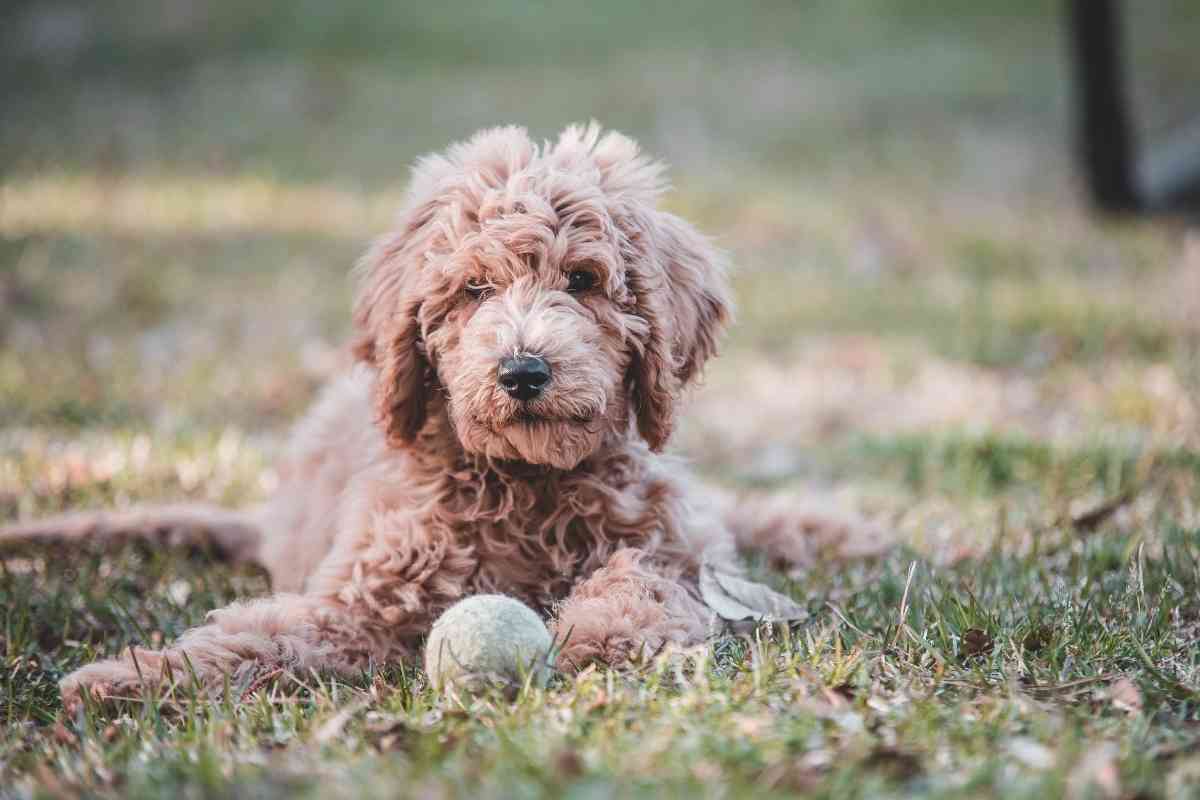
Many Golden Doodles are going to take after the Poodle part of the genetics, which means that they will get lighter as they age, and that apricot coat that you loved will get a bit lighter.
A black puppy may turn more blue or silver in color, and some who have a golden color at birth will become cream in color.
The color is not going to completely fade out of the dog, but you should expect it to get a little bit lighter as they begin to mature.
Breeding Matters
When the Goldendoodle is bred properly, they should not get darker in color as they age, though this can happen on occasion.
This is because the Golden Retriever genetics are going to be recessive when it comes to the fur.
This means that if you have chosen a Goldendoodle due to the specific color that you like, be prepared for it to fade out a bit and not be as vibrant and dark as they get older.
The genetics of the Goldendoodle will get more complicated when you start to work through different generations of the Goldendoodle and when you breed two Goldendoodles together.
When you do this, you will still have puppies that are Goldendoodles, but determining the type and colors of the coats will be a bit harder.
This is because you are adding together two sets of Poodle lineage and two sets of the Golden Retriever. You will still end up with adorable puppies, but the Goldendoodle colors will be unpredictable.
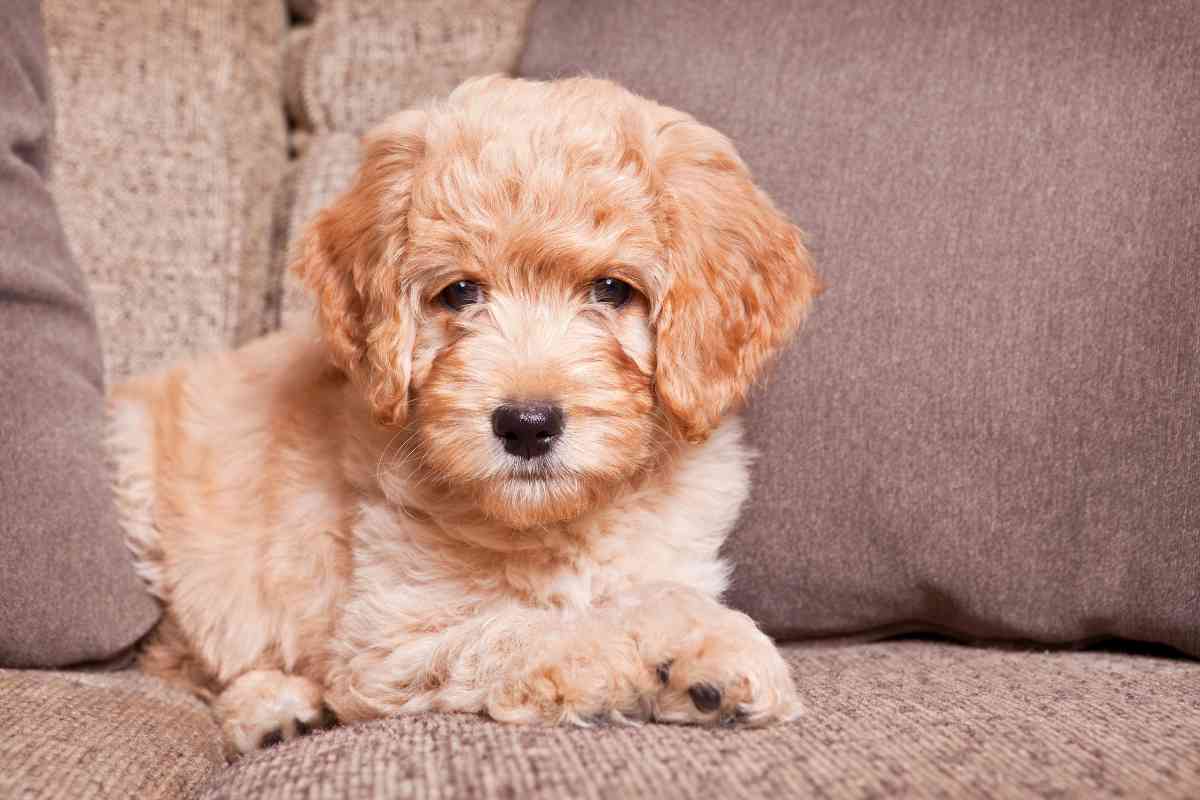
How Can I Get an Apricot Goldendoodle?
While there are no guarantees when it comes to the color that you are able to get from your Goldendoodle, there are some steps that you can take to work on getting an apricot Goldendoodle and to ensure that the coat will not fade too badly as they get older.
The first step with this is to pick out a reputable Goldendoodle breeder.
They will understand what pair of dogs to breed together to provide the right colors that the owners want. These breeders have an extensive amount of knowledge when it comes to Goldendoodle genetics, and they know what sort of clearing to expect.
They also have all the genetic information about both parents to make sure that things work out.
You can also take a look at the poodle parent to get a better idea of how the puppy is going to look.
When you want a darker-colored Goldendoodle to add to your home, the Poodle is the best one to look at.
You can ask the breeder whether they have some pictures of their breeding dogs when they were puppies to see how much the fur is going to have color change over the years.
You can then look at the Golden Retriever parent to see whether they will fade a lot or not. This does not mean that the puppy is not going to have a faded coat, but it gives you a better idea of the Goldendoodles’ coat colors as the puppy gets older.
Your Breeder can Help to Predict Physical Traits like the Red Coat Color
When a Goldendoodle litter produces more than one color, you could ask the breeder what the other litters in the past looked like. Ask if it is possible to see pictures of these litters and how they looked when they matured.
Many breeders will keep track of the pups to make sure that they are well-taken care of and do not end up in a shelter.
And it is not uncommon for owners to send pictures of the dogs back to the breeder when they grow up. There is likely to be at least a few comparison pictures ready for you to use.
While the Poodle parent is going to give you the best idea of what color fur the Goldendoodle is going to have, you do need to take a look at the Golden Retriever to see what color coat they have as well.
Check the Fur
This is going to give you the best idea of how much the fur of the Goldendoodle is going to lighten or darken as they get older. If you notice that both the Golden Retriever and the Poodle seem to have a darker coat, it is more likely that the puppy is going to stick with a darker coat as well.
You can also look at the fur around their muzzle. That fur is usually more like what their adult fur color will be.
Remember that having a poodle parent and retriever parent makes the dog’s coat less predictable. You could end up with a red Goldendoodle teddy bear with a fluffy coat, a cream color flat coat, or have a secondary color come out late in the dog’s life. Breeding two dog breeds together is less predictable than breeding a line for years.
These can be adorable puppies, but there is just too much unpredictability about these dogs if you want a specific color coat on the dog.
Instead, choose a breeder that has been going for a particular Goldendoodle coat color for a long time and has predictable puppies that closely resemble their parents.
These are great pets if the coat color is not important to you, but for those who want a specific color Goldendoodle, it is best to work with a first-generation to help you get the best luck at this goal.
Choosing the Right Goldendoodle for Your Family
The Goldendoodle is a great dog that many families love to add to their homes. While these hybrid dogs are not recognized as their own breed by the American Kennel Club (AKC) yet, they are loyal, have a lot of fun to have around the kids, and can be your best friend until the end (especially if you suffer from allergies!).
When you are choosing the right Goldendoodle for your needs, though, you need to use the right precautions to make sure that you understand how the genetics work and how you will be able to get the color that you like, even as the puppy gets a bit older.
Related Content You May Find Interesting
Here are some more articles that may be of interest to you if you’re wondering about Goldendoodle coats.
- Goldendoodles come in many different colors including brown, black, silver, apricot, and more
- Apricot Goldendoodles will fade over time, as all other colors of Goldendoodles, due to the normal aging process
- The color of a Goldendoodle is determined by the parents, with the Poodle parent providing more variety in color
- Common colors of Goldendoodles include black, white, chocolate, apricot, red, cream, tan, grey, blue, silver, sable, parti, tri-color, phantom, tuxedo, brindle, and champagne
- Goldendoodles can get lighter as they age, especially if they take after the Poodle part of their genetics
- The color of a Goldendoodle should not get darker as they age, as the Golden Retriever genetics are recessive when it comes to the fur
